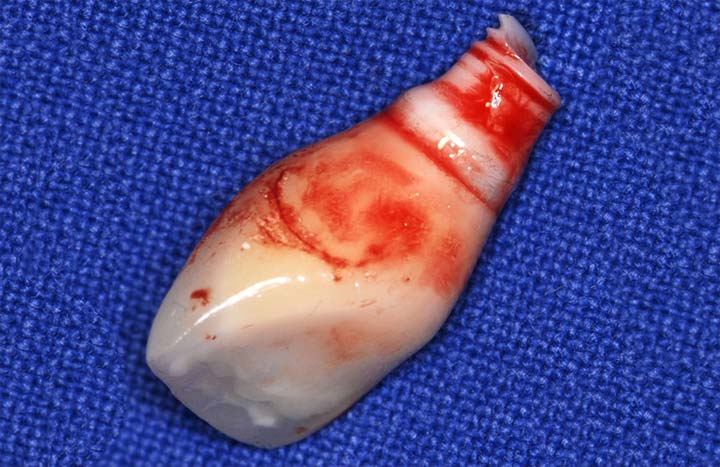On fracture susceptibility
The material-specific condition of zirconia implants right after the final industrial manufacture, as found by clinicians in the packaging and used by their patients, is referred to as the tetragonal phase condition of zirconium dioxide. “Tetragonal phase” refers to the most stable and resistant condition of ceramic implants that clinicians naturally desire for the safest and most durable treatment for their patients. It is guaranteed through stabilisers such as yttrium oxide, which are added in minute quantities to the starting material during industrial production. Phase transformation is the transition from the fracture-resistant tetragonal phase to the monoclinic, fracture-prone phase. Phase transformations of the material structure must be expected when grinding zirconium dioxide with rotating instruments. Uncontrolled grinding with, for ex-ample, coarse-grained diamonds and insufficient cooling of the material results in micro-cracks within the outer surface layer of the material and in the underlying material structure.
This phase transformation is associated with volume expansion and can stop the propagation of mechanically induced micro-cracks in the material structure. However, there are limits to this “self-healing mechanism” of zirconium dioxide. Once the unique compensatory capacity has been exceeded, micro-cracks in the microstructure remain, which can favour the unwanted introduction of water. This, in turn, can lead to an uncontrolled ageing process and consequently to instabilities in the material structure, a fatal development with regard to the tensile strength of the material zirconium dioxide. It thus becomes apparent that incorrect handling of the material has clinical relevance. This example shows that metallic materials are not comparable with ceramic materials. The grinding of titanium is not as clinically relevant, compared with zirconium dioxide. It would be a great mistake to draw conclusions about the processing of ceramic materials from metal processing.
A brief history of zirconia
During the first stage of development of zirconium dioxide implants at the beginning of the 2000s, high blasting pressure and large particles were used to micro-roughen the surface of zirconium dioxide. As a result of this ambitious industrial production process, micro-cracks were found in the surface structure of ceramic implants, which in one case or another led to later fractures under high occlusal forces caused by teeth grinding or chewing, for instance. Even today, a great number of fractures of ceramic implants can be traced back to an improper industrial manufacturing process or the later mechanical handling by the dentist. The process according to which the micro-roughness of the surface of a zirconia implant is achieved has changed over the decades with each stage of evolution of the material and with the newly acquired knowledge about phase transformation. Nevertheless, there are still no industrial standards and therefore different manufacturing techniques that assess these aspects differently. For example, an implant manufacturer offers a lifetime material-specific guarantee for ceramic implants, provided that the implants are not ground by the dentist.
Image credit: Prof. Michael Gahlert
